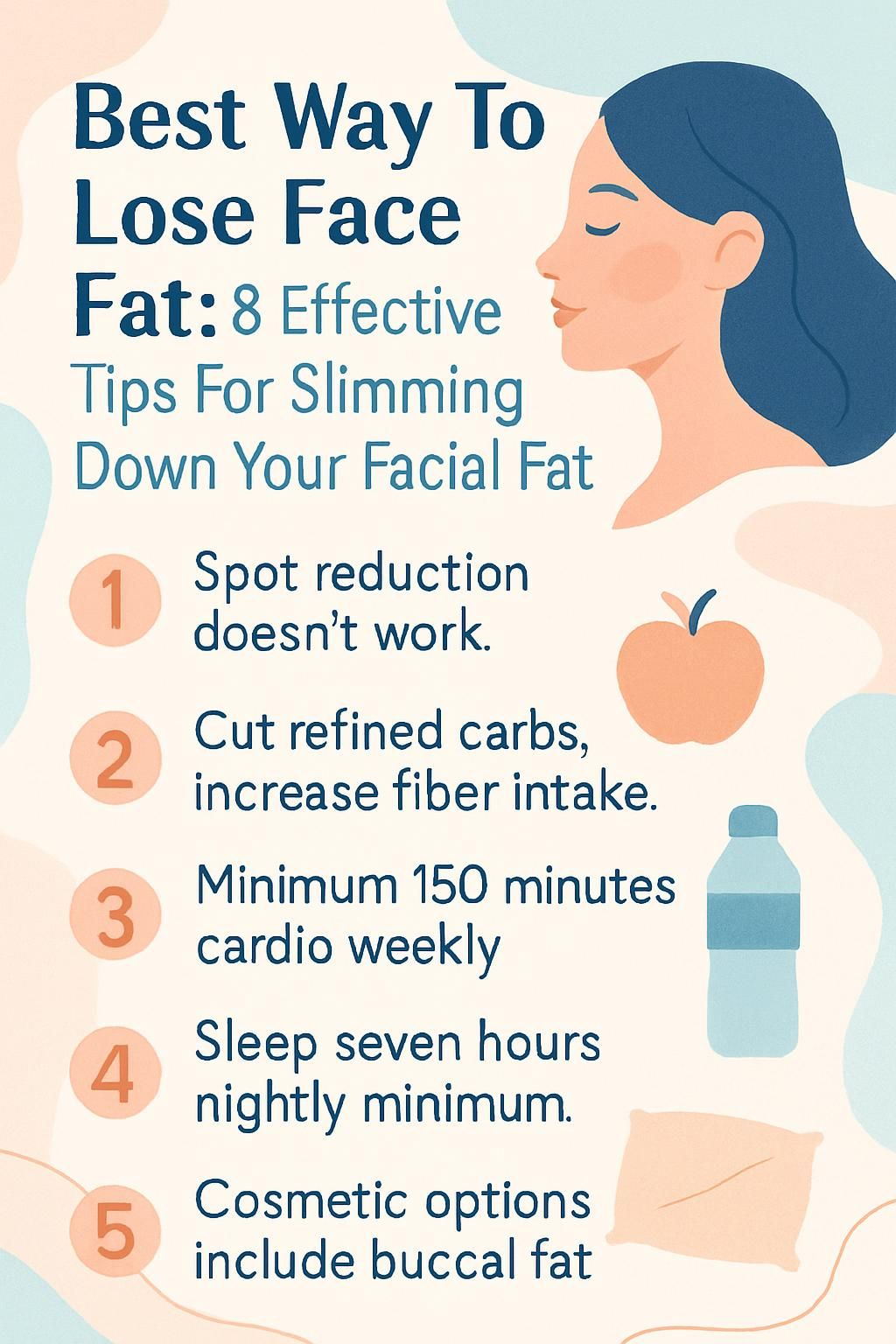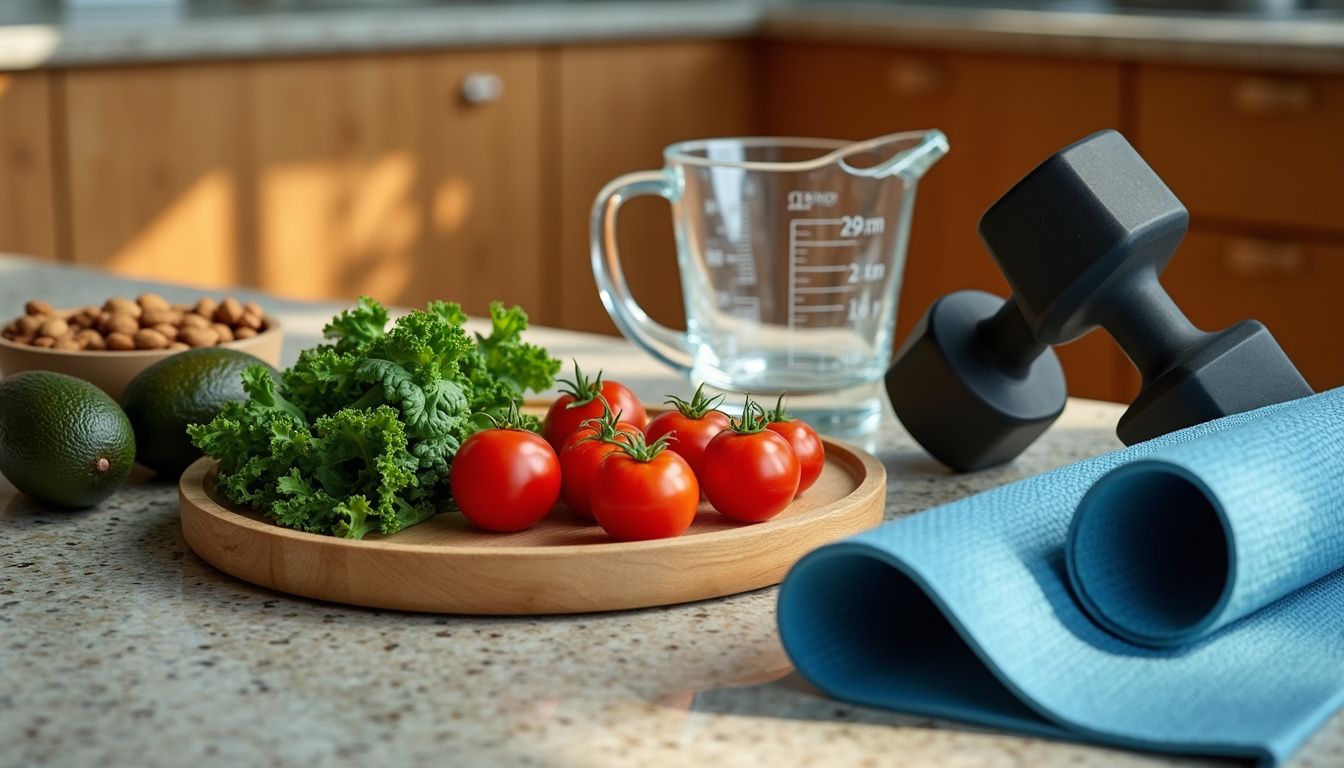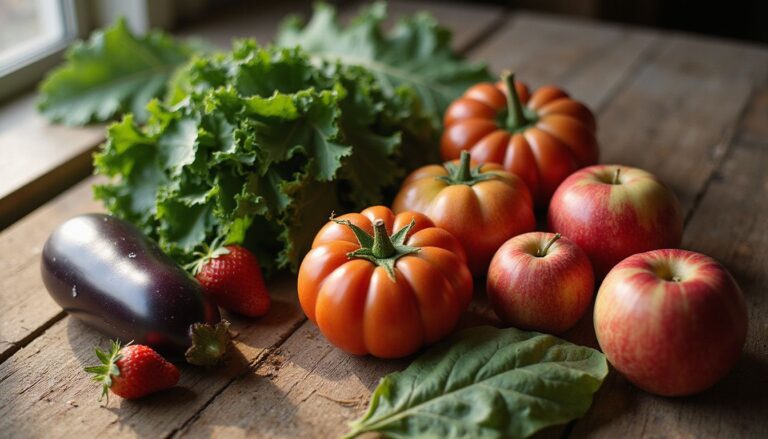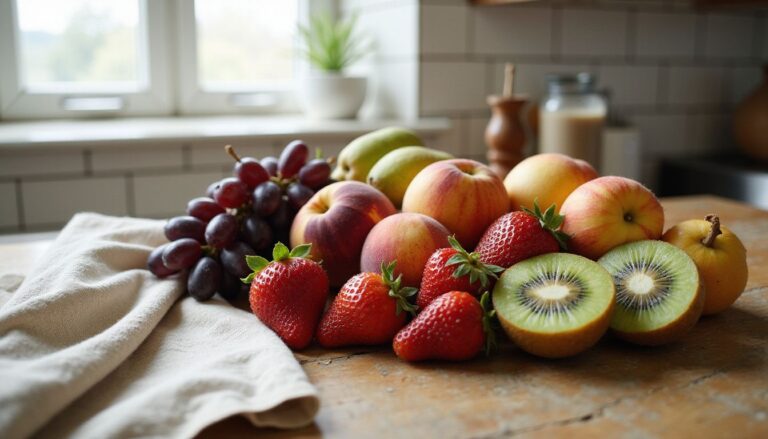Best Way To Lose Face Fat: 8 Effective Tips For Slimming Down Your Facial Fat
Our Nutrition Assistant AI Suite will transform your body. You will lose fat, get toned, and build muscle. Gain confidence and optimal health.
If facial fat makes your features look fuller, you are not the only one noticing it. You can lose face fat as you lose body fat, and small habits add up across weeks. This guide explains the best ways to reduce facial fat with 8 effective tips, smart nutrition, simple exercise ideas, and clear answers to common questions.
You will learn how to set realistic goals, build routines you can keep, and avoid popular myths. The aim is a face that looks slimmer, a body that feels stronger, and habits that support your health.
Key Takeaways
- Spot reduction is a myth. You reduce facial fat as you lower total body fat with cardio, a balanced diet, and strength training (Dr. Susan Fried, 2023).
- Cut refined carbs and sodium, and increase fiber, protein, and water. These changes lower puffiness and support steady weight loss.
- The CDC suggests 150 minutes of moderate cardio plus two days of resistance training each week. This combo helps trim body fat and can slim your face.
- Short sleep raises cortisol, a stress hormone that boosts appetite and fat storage. Aim for seven hours nightly, as advised by the CDC.
- Cosmetic options range from buccal fat removal, which needs up to three weeks to recover, to nonsurgical choices like CoolSculpting, Botox, and radiofrequency devices.

Is It Possible to Lose Fat Only From Your Face?

Spot reduction does not work for facial fat. Research shows that fat loss happens across the entire body, including your face, when you improve diet and activity.
You cannot shrink only your cheeks or jawline with special facial moves. Fat cells live throughout the body. Which areas slim first depends on genetics and your full routine.
I tried several facial workouts for my cheeks and saw no change. Results started only after I cut calories and added more cardio to my week.
Experts support a whole-body plan. Better nutrition, regular strength work, aerobic exercise, hydration, and less alcohol help reduce both belly fat and facial fat at similar rates.
Spot reduction is a myth with no solid evidence,says Dr. Susan Fried of the Icahn School of Medicine (2023).
What Are the Main Causes of Facial Fat?
Genetics has a strong hand in how much fat shows in your face and where it sits. You may inherit fuller cheeks, a softer chin, or a double chin from your family. The buccal fat pad, a deep pad in the mid-cheek, also varies by genes.
Aging shifts fat beneath the skin. It moves from higher areas like the cheeks toward the jowls and jawline, which can make skin look looser and the face look heavier.
Food choices matter too. Processed sugars and salty meals can cause bloating and puffiness under the eyes, chin, and jaw. Alcohol often leads to facial swelling because it dehydrates you, then your body holds water.
Low activity raises body weight and increases fat in the neck and under the chin. That buildup can create a double chin.
After I swapped refined carbs for whole grains and added steady cardio, my face looked leaner. Those changes lowered my weight and trimmed the area under my chin without strict dieting or surgery.
8 Effective Tips to Slim Down Facial Fat
Use these 8 effective tips to lose facial fat and shape a slimmer look. Each one has simple steps, plus the science in plain language.
Which Facial Exercises Help Reduce Face Fat?
Facial exercises may help tone muscles in your face. A 2021 review suggests they can improve appearance and support facial rejuvenation, though more research is needed to confirm results.
- Puff out your cheeks and move the air side to side for 15 to 30 seconds. This activates cheek muscles and may ease puffiness.
- Pucker your lips tightly to one side, hold five seconds, then switch. This targets mouth muscles and improves tone.
- Hold a wide smile while gently clenching your teeth for 10 seconds. Do this twice daily to work muscles around your mouth and jawline.
- Tilt your head back and push your lower jaw forward for 10 seconds, then relax. This move works the chin and neck area for sharper lines.
- Do chin lifts. Look up, purse your lips like a kiss to the ceiling, and hold five seconds. Repeat 8 to 10 times to target under-chin fat.
- Try cheekbone lifts. Place fingers above your cheekbones and lift the skin upward while opening and closing your mouth. This stimulates the tissue and may support firmness.
- Practice Lion’s Breath in yoga. Open your mouth wide and stick out your tongue strongly. Repeat three times to wake up facial muscles.
Practice often for at least 30 days. Many people notice improved tone or less puffiness with steady use. Pair these moves with cardio to boost fat loss.
How Does Adding Cardio Help Lose Facial Fat?
Cardio raises your heart rate and helps you burn more calories. That energy demand supports fat loss across your body, including a fuller face. In a 12-week aerobic program, participants lowered their body fat percentage, weight, and waist size.
Good options include brisk walking, running, dancing, cycling, and swimming. The CDC recommends at least 150 minutes of moderate cardio plus two days of resistance training weekly. This plan increases daily energy burn and can slim facial features over time.
Dancing for thirty minutes can raise your heart rate enough to support weight loss.
Hydration is the next lever. It can make a clear difference in facial puffiness and shape.
Why Is Staying Hydrated Important for Face Slimming?
Drinking enough water helps control appetite and lowers snacking. Some reviews report that raising water intake is linked to modest weight loss across weeks. Water before meals can reduce calories eaten at that meal.
Swapping soda or juice for water lowers your daily calorie total. Many people also see less facial swelling since hydration prevents your body from holding extra fluid.
When I replaced energy drinks with water during workdays, my face looked less puffy within two weeks. This simple habit supports a leaner look and healthier body composition.
How Does Limiting Alcohol Affect Facial Fat?
Alcohol adds extra calories with little nutrition. Those calories can turn into stored fat, including in the face. Alcohol also dehydrates you, then your body holds water, which shows up as puffiness in the cheeks, chin, and under the eyes.
The CDC defines moderate use as up to two drinks per day for men and one for women. Staying within these limits can help prevent extra weight gain in your face.
When I cut back on drinks with friends, my cheeks looked less swollen after a couple of weeks. Choose water before meals and reach for alcohol less often if slimming your face is a goal.
Why Should You Cut Back on Refined Carbs?
Refined carbs like cookies, crackers, and white pasta digest fast and raise blood sugar quickly. That spike makes it easier to store fat, and facial areas can show it.
People who favor whole grains over refined options gain less fat over time. Choose oatmeal, brown rice, or quinoa. These foods help you follow a healthy diet and reduce the risk of added fat in your cheeks and jawline.
I swapped sugary snacks for whole grains for a month. My face felt less bloated within weeks. Higher fiber also supports digestion, which may help reduce water retention.
How Does Quality Sleep Influence Facial Fat?
Seven hours of solid sleep helps control appetite hormones like leptin and ghrelin. Too little sleep raises cortisol, a stress hormone that can lead to weight gain and more facial fat.
Poor sleep slows your metabolism and increases cravings. That makes it harder to slim your face, even with an active routine and good food choices.
Studies show that short sleepers often eat more the next day and feel less satisfied after meals. Quality sleep is a quiet tool for reducing fat in areas like the cheeks and chin.
What Is the Impact of Sodium on Face Puffiness?
Most sodium in the diet comes from processed foods, such as chips, canned soups, and fast food. Too much sodium causes your body to hold water, called edema, which shows as swelling in the face and ankles.
After a salty takeout dinner, I woke with rounder cheeks. When I returned to fresh foods, the swelling faded within a day or two.
Lowering sodium means your body holds less fluid under the skin. Trade salty snacks for fresh fruit and vegetables to reduce puffiness fast.
How Can Increasing Fiber and Protein Help?
Fiber slows digestion, which keeps you full longer and limits cravings. Reviews link higher soluble fiber intake with lower body weight and smaller waist size even without strict calorie tracking.
Adults should aim for about 28 to 34 grams of fiber daily. Good sources include whole grains, beans, lentils, nuts, seeds, fruits, and vegetables.
Protein supports muscle, which raises your resting metabolism. I added eggs at breakfast and stayed full until lunch, which helped control snacking.
Both nutrients support fitness and help prevent overeating, which can reduce facial fullness over time.
Facial Exercises to Tone Your Face
Facial exercises for fat loss can help your face look tighter. Focus on simple moves you can repeat daily.
How Do Cheek Puffing and Smiling Exercises Work?
Cheek puffing and smiling drills can strengthen key muscles under the skin. Toned muscles can make features look lifted and more defined.
- Puff out both cheeks with air, then move the air side to side for 15 to 30 seconds. Repeat up to three times.
- Hold a wide smile while gently clenching your teeth for 10 to 15 seconds. Repeat five times to engage muscles that shape your smile.
- Some studies suggest facial exercises can improve muscle tone and elasticity, especially in adults over 30, when practiced for at least 8 weeks.
- Try cheek lifts. Lift your cheeks toward your eyes using only your facial muscles, hold for 10 seconds, then relax.
- Be consistent. Aim for about 30 total reps per move across the day for a firmer feel over time.
- From my routine, doing these drills right after brushing my teeth helped me stay consistent. I noticed firmer cheeks within a month.
- Dermatology research suggests combining these moves with a nutritious diet for better results across stubborn cheek fat pads.
- Pair these exercises with hydration, like water before meals, to limit sodium-related puffiness.
- Regular practice plus healthy habits can support better symmetry and a slimmer look.
These steps target major facial muscles linked with fullness in the cheeks and jawline. Consistency matters more than intensity.
What Are Jawline Sculpts and Chin Lifts?
Jawline sculpts and chin lifts focus on the muscles around the jaw, chin, and neck. Stronger muscles can improve tone and support a leaner lower face.
- Do a jaw release. Mimic chewing while pressing your tongue to the roof of your mouth for 30 seconds.
- Try chin lifts. Tilt your head back, look at the ceiling, and push your lower lip upward. Repeat ten times.
- Form a “V” with your lips while opening your mouth wide, hold five seconds, then relax. Repeat at least eight times.
- Add gentle resistance. Place both fists under your chin and press down slightly while trying to open your mouth. This engages fat cells and the muscles below.
- Smile widely with closed lips for five seconds, then relax. Repeat to engage several supporting muscles.
- Do slow neck rolls for 30 seconds each direction. This boosts blood flow and tones tissues near your cheekbone.
- Clench your jaw for a count of three, then relax. Repeat ten times daily to support jawline definition.
Some people consider small-volume liposuction under local anesthesia for stubborn under-chin fat if exercise does not change the area after several months. Surgeons may suggest this instead of cheek fat removal or fillers for longer-lasting contouring with limited downtime.
Which Yoga Poses Strengthen Facial Muscles?
Yoga can help tone facial muscles, support circulation, and calm stress that may worsen swelling. These poses are simple and need little space.
- Downward-facing dog boosts blood flow to your face, which may support skin elasticity.
- Cobra pose stretches your neck and jawline and can help the lower face look tighter.
- Fish pose promotes deep breathing and oxygen delivery, which supports skin health and puffiness control.
- Lion’s Breath engages cheek and mouth muscles. It may reduce expression lines as circulation improves.
- Plow pose gently tones the lower face and can help reduce fluid retention.
- Combine yoga with water before meals and fiber- and protein-rich foods for better results.
- Regular practice can also lower stress. Less stress often means less facial swelling.
Short sessions still count. Two or three poses after work can ease tension and support a slimmer look.
The Role of Cardio and Strength Training in Reducing Face Fat
Cardio and strength work together like a team. Cardio burns fuel now, strength training raises the amount you burn later, even at rest.
Benefits of Aerobic Exercises
Aerobic exercise increases how many calories you use each day. Running, biking, swimming, walking, and dancing help your body tap stored fat for energy.
Adults benefit from about 150 minutes of moderate cardio each week, such as brisk walking or cycling. For example, walking 30 minutes five days a week supports fat loss and helps reduce facial puffiness linked to water retention.
Your body mobilizes energy from different areas as needed during activity. A steady cardio routine supports heart health and helps you lose weight across your body, including your face.
Incorporating Strength Training for Overall Fat Loss
Strength training builds muscle mass. More muscle raises your resting metabolism, which means you burn more calories around the clock.
The CDC recommends at least two days of resistance training each week. Use free weights, resistance bands, or bodyweight moves to train legs, back, chest, and arms.
If your goal is to lose facial fat, strength work helps by lowering total body fat and supporting a leaner shape. Many people notice faster changes when they mix resistance training with cardio.
Dietary Changes to Prevent Excess Facial Fat
Your daily diet can either increase facial puffiness or help reduce it. Choose foods that lower water retention and support steady fat loss.
How Can Reducing Calorie Intake Help?
Reducing calories creates a deficit, which means you take in fewer calories than you burn. Over time, your body uses stored fat for energy, including fat in the face. The NIH notes that one pound of fat equals about 3,500 calories.
Track your intake with a simple log or app. A moderate deficit is safer and easier to keep, which protects your health and avoids extreme tactics.
Steady habits still win. As your weight falls, facial fullness often drops too.
Why Avoid Sugary and Processed Foods?
Sugary and processed foods are high in added sugar and sodium. These ingredients can cause water retention, which makes your face look puffier. Diets rich in added sugar raise the risk of weight gain, especially around the cheeks and jawline.
A can of regular soda carries around 39 grams of sugar. Salty snacks and instant meals push sodium even higher, which can worsen swelling. If you also struggle with poor sleep or frequent drinking, the puffiness can be more noticeable.
Two weeks without chips and desserts made my features look more defined. Limiting refined carbs pairs well with cardio and, for some people under medical care, weight loss medications.
Summary: Processed sugar and salt can puff the face and drive weight gain. Cutting them supports a slimmer, healthier look.
What Whole Grains, Fruits, and Vegetables Should You Eat?
Replacing refined carbs with whole foods helps your face and your energy. Build meals around fiber, vitamins, and minerals.
- Choose whole grains like oatmeal, brown rice, and quinoa instead of white bread or pasta. Aim for 28 to 34 grams of fiber daily.
- Pick fruits like berries, apples, oranges, and pears for sweetness with fewer calories and more fiber.
- Load up on leafy greens such as spinach, kale, romaine, and arugula. Vitamin C in greens may help reduce puffiness.
- Add cruciferous vegetables like broccoli and cauliflower. Their fiber supports fullness and skin health.
- Include legumes such as lentils, black beans, chickpeas, and edamame for protein plus soluble fiber.
- Use colorful vegetables like carrots, peppers, tomatoes, and zucchini for a wide mix of nutrients.
- Sprinkle nuts and seeds, like almonds and chia, for extra fiber and healthy fats.
- During a busy exam season, I chose brown rice bowls with spinach and grilled vegetables instead of fast food. The swap gave steady energy and less facial swelling.
Lifestyle Adjustments to Support Fat Loss
Small daily habits can shape your face over time. Think of these choices as low-effort tools that support steady progress.
How Can Managing Stress Reduce Facial Fat?
Stress raises cortisol. High cortisol can increase fat storage in the abdomen and the face. It also disrupts sleep and raises ghrelin, the hunger hormone, which can push you toward less healthy foods.
Try deep breathing, walking, yoga, or time outdoors. As stress falls, leptin, the fullness hormone, works better. Better sleep lowers cortisol and helps your body burn more fat throughout the day.
Less stress usually means less water retention and less facial swelling. Your features tend to look sharper, and your mood often improves too.
What Daily Habits Improve Long-Term Fat Loss?
Long-term progress depends on the small choices you repeat. Start with a few habits you can keep.
- Drink 8 to 10 glasses of water daily. Hydration reduces puffiness and supports metabolism.
- Aim for at least seven hours of sleep each night. Quality sleep lowers cortisol and helps manage facial weight.
- Include protein at each meal, such as eggs, chicken, tofu, or lentils. Protein increases fullness and protects muscle.
- Add fiber from fruits, vegetables, whole grains, beans, and seeds. Fiber slows digestion and reduces hunger.
- Get regular cardio, like brisk walking, cycling, or swimming, five days a week for 30 minutes.
- Cut salty snacks and processed meals to lower sodium, which reduces facial water retention.
- Limit alcohol to one drink per day if you drink, since it can cause dehydration and fullness in the face.
- Use simple stress tools, like deep breathing or meditation, to avoid stress-driven eating.
- Gua sha can help some people see temporary puffiness reduction through gentle massage.
Consistency beats intensity. Keep the basics, and your face and body will reflect the effort.
Can Using a Humidifier Reduce Face Puffiness?
Dry indoor air can pull moisture from your skin while you sleep. Your body may hold fluid as a response, which can show up as morning puffiness.
Run a humidifier overnight, especially in winter or with central heat. Many people wake with less swelling. Combine this with smart hydration, sleep, and lower sodium for best results.
What Are the Common Myths About Spot Reduction and Facial Fat?
A common myth says you can target fat loss in one spot with local exercises, like cheek drills, and skip full-body changes. Research disagrees. Your body loses fat in a pattern set by genetics and your habits.
Social media often promises fast face slimming with a single trick. I spent weeks on jawline workouts and saw little change. The real shift came after I added cardio and cut refined carbs.
Spot reduction does not work for the stomach, hips, or face. A whole-body plan still wins.
Cosmetic and Nonsurgical Options for Facial Slimming
Cosmetic choices can help if lifestyle changes feel slow or if fullness persists due to genetics. Compare each option’s risks, cost, and recovery before you decide.
What Is Buccal Fat Removal Surgery?
Buccal fat removal trims fullness in the mid-cheek. A surgeon makes small incisions inside the mouth under local anesthesia, then reduces part of the buccal fat pad. The procedure usually lasts under an hour.
You may need a liquid diet for a few days and medicated rinses for healing. Swelling improves in one to two weeks, with most recovery in two to three weeks. Final results take months as the tissues settle.
Risks include infection, bleeding, nerve injury with numbness, hollowing, and asymmetry. Genetics, age, and body weight affect your starting cheek volume. Discuss how exercise results compare with surgical options, and how facial procedures fit your needs alongside other body contour choices.
Which Nonsurgical Treatments Work for Facial Slimming?
Many people prefer nonsurgical treatments for facial contouring because downtime is limited. Options vary in how they work and how long results last.
- CoolSculpting uses cold to reduce fat under the chin or along the jawline. The FDA cleared it for small fat pockets in 2017.
- Radiofrequency devices heat deep tissue to boost collagen and tighten slack areas without surgery.
- Botox into the masseter muscle relaxes it, which can slim a square jaw over several weeks.
- Dermal fillers add volume where needed to balance contours and improve symmetry.
- Focused ultrasound stimulates collagen and gently lifts sagging skin with gradual results.
- Deoxycholic acid injections dissolve small under-chin fat deposits over a series of short visits.
- Gentle facial lymphatic massage can reduce fluid retention for short-term slimness after salty meals.
These methods can shape the lower face with less downtime than surgery. Provider policies and terms of service differ, so review details before booking.
How Long Does It Usually Take to See Face Fat Loss Results?
Most people need several weeks of consistent effort before they notice changes in the face. Genetics sets the order of fat loss, so cheeks or jawline may change sooner for some and later for others.
If you keep up with exercise and balanced meals, you may see early changes within three to four weeks. Deeper slimming builds across months.
Surgery follows a different timeline. You may see swelling for one to two weeks, and final contour shows after a few months. When I cut sugar and walked daily, my face looked leaner after about five weeks.
FAQs About Losing Facial Fat
Here are direct answers to common questions. Use them to guide your next steps.
Can Facial Fat Be Lost Quickly?
Quick facial fat loss is rare. Your body loses fat as a whole, and the pace depends on your routine and genes. Some people notice a leaner face after early weight loss, but this varies a lot.
Hydration can help reduce bloating, which may look like faster change. Reviews suggest higher water intake supports small reductions in weight across weeks. Real progress still comes from steady diet, activity, sleep, and stress care.
What Foods Make Your Face Look Fuller?
Processed sugars and salty foods can make your face look fuller due to water retention and extra calories. Chips, fast food, candy, and soda often carry high sodium or added sugar.
Research links higher intake of processed foods with more visible facial fullness compared with diets rich in whole produce and grains. Cakes, pastries, white bread, crackers, canned soups, and frozen dinners raise blood sugar and insulin, which can drive fat storage in the cheeks.
Swap packaged snacks for fruit or unsalted nuts to support a leaner face.
Does Genetics Affect Facial Fat?
Yes. Genetics has a major role in how much facial fat you carry and where you store it. The buccal fat pad, which sits between the cheekbone and jawline, also varies by genes.
Age and weight change your face too, but family traits often explain why some people keep fuller cheeks even when they are slim. I noticed that my father had round cheeks at every size, and I do as well.
Studies suggest inherited patterns shape where fat collects and how it leaves¹. This helps explain why targeting the face alone rarely works.
¹References: Genetics and obesity research (NIH), Journal of Clinical Investigation 2020
Conclusion
Slimming facial fat starts with habits you can keep. Do simple facial exercises, stay hydrated, and build meals around fiber and protein. Add cardio and two weekly strength sessions to increase calorie burn. Protect your sleep to support hormone balance and better weight management.
Limit alcohol, sodium, and refined carbs to reduce facial puffiness. Small changes made daily can make your face appear slimmer across weeks. If facial fullness persists or you are considering cosmetic options, consult a qualified healthcare professional for personal guidance. This article is educational and is not medical advice.
FAQs
1. What are the most effective tips for losing facial fat?
Research shows that a balanced diet, regular aerobic exercise, staying hydrated, reducing salt intake, getting enough sleep, avoiding alcohol, practicing facial exercises, and managing stress can help reduce facial fat. Studies link these habits to overall weight loss and improved health.
2. Can specific foods help slim down your face?
Eating whole grains, lean proteins like chicken or fish fillets, fruits such as apples or berries, and vegetables supports healthy weight management. Limiting processed foods high in sodium helps prevent water retention in the face.
3. How long does it take to see results from efforts to lose facial fat?
Results vary based on genetics and lifestyle changes; some people notice differences within several weeks of consistent healthy eating and exercise routines. Data from clinical studies suggest visible improvements often appear after sustained effort over one to three months.
4. Are there proven exercises that target facial fat reduction?
While no scientific evidence confirms spot reduction for the face alone, research indicates that full-body workouts combined with targeted movements like cheek lifts or jawline stretches may improve muscle tone in the face when practiced regularly alongside other healthy habits.
Summary:
Losing facial fat involves adopting a nutritious diet rich in whole foods; maintaining an active lifestyle; drinking plenty of water; limiting salt and alcohol consumption; ensuring adequate rest; managing stress levels; and incorporating simple facial exercises into daily routines. Consistency is key for noticeable results according to current research findings.







